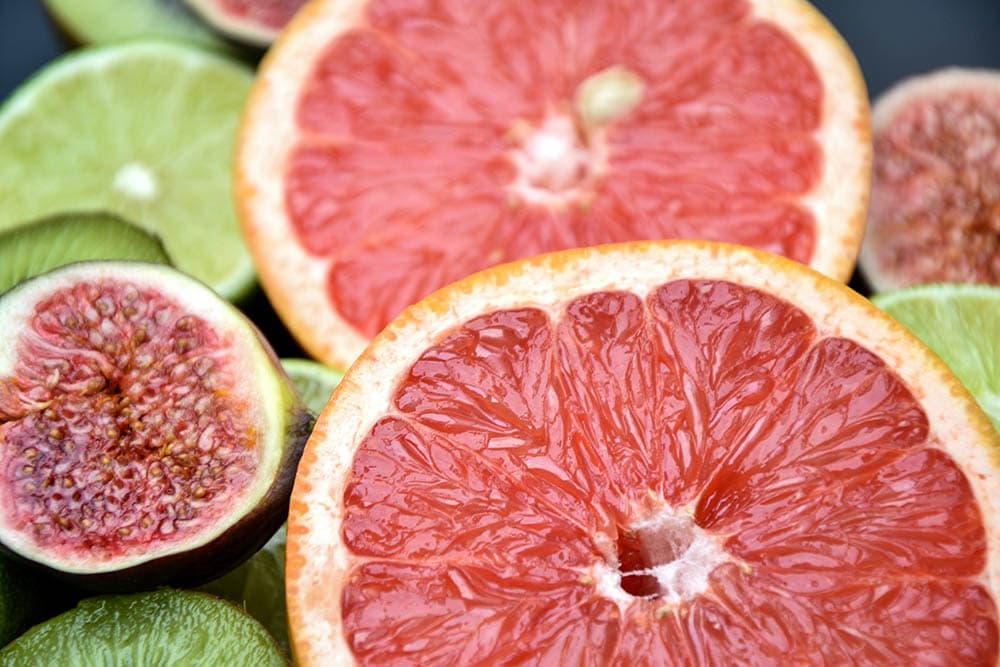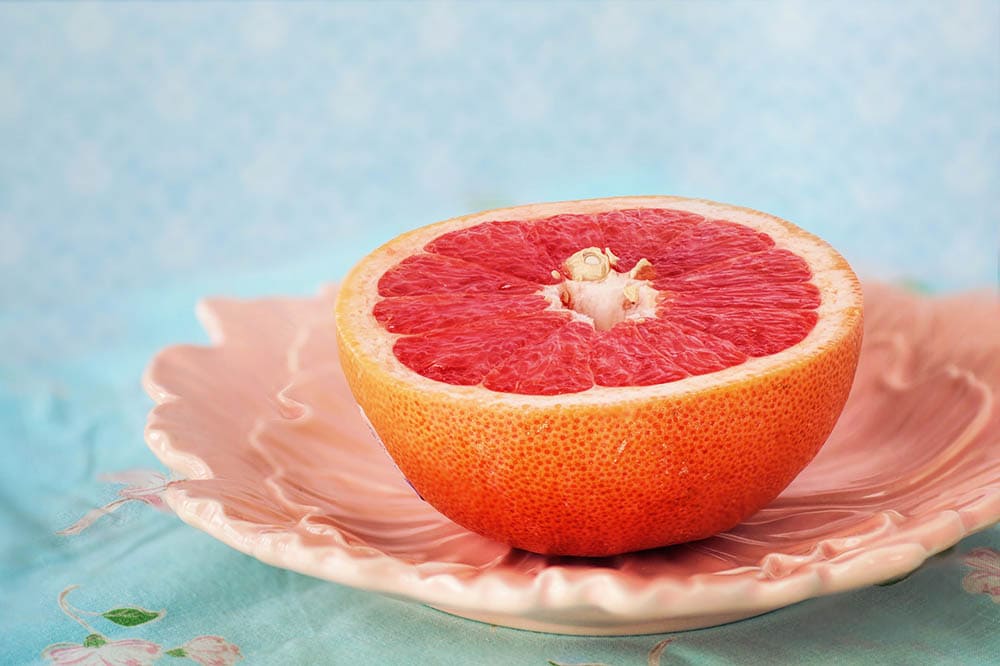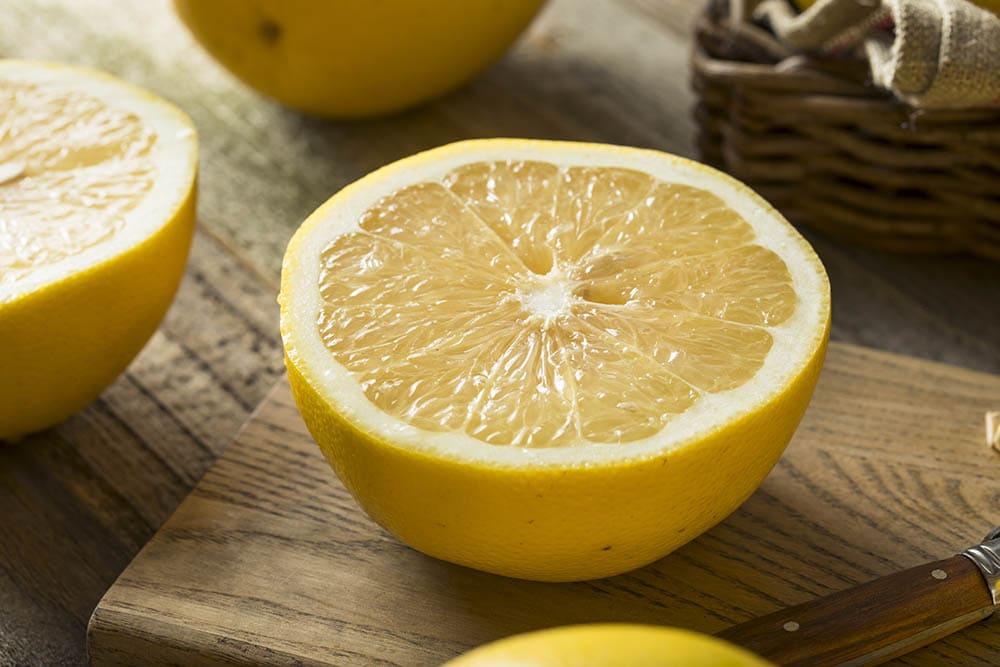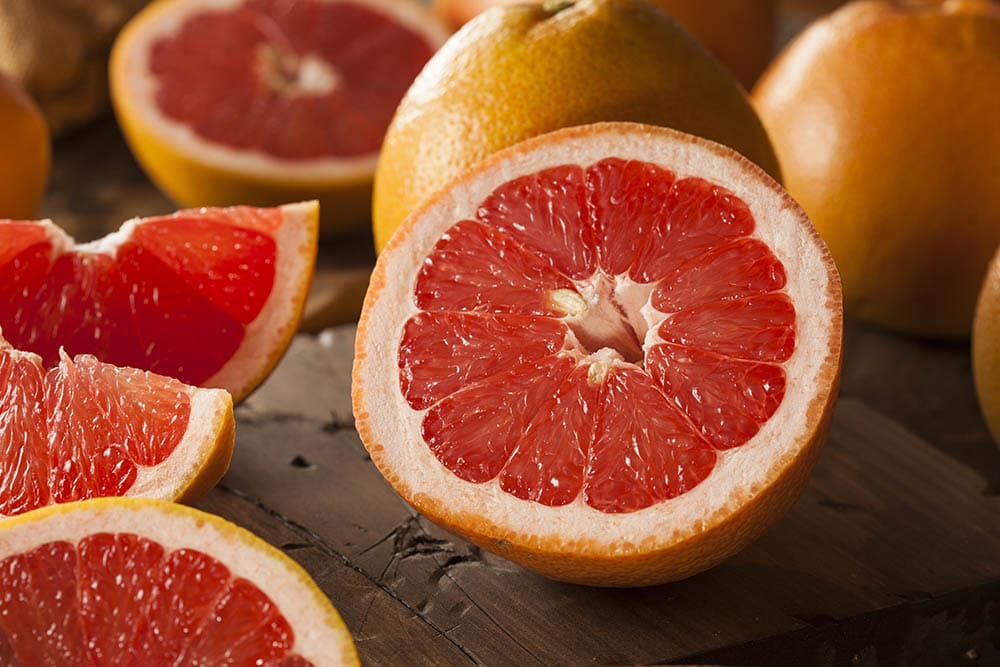10 Types of Grapefruit (With Pictures)
-

- Last updated:

Citrus fruits are known for their juicy tang, but none is more robust in taste, size, and punch than grapefruit. Packed full of antioxidants, bright and flavorful grapefruit flesh is the ultimate morning pick-me-up and a nutritious snacking choice throughout the day.
Health points aside, the flavor isn’t for everyone. Or, at least, it would seem that way if you don’t know about the wide variety of grapefruits available!
Whether you like sweet, bitter, mellow, or sharp, there’s a cultivar for you. Let’s find the perfect addition to your diet with this look at 10 types of grapefruit.
The 10 Types of Grapefruit
1. Pink Grapefruit

Along with red and white grapefruit, pink grapefruit is one of the three general classifications of grapefruit. Common varieties include Thompson, Foster, and Henderson.
Pink grapefruits offer juicy flavor and a perfect blend of tartness and sweetness. The flesh isn’t sour or overly bitter, making them some of the most popular grapefruits for people looking to add something tasty yet healthy to their diet. They often appear in juices and other grapefruit-flavored products.
The pink color is a product of natural antioxidants. Pink grapefruit contains vitamin C, potassium, beta-carotene, and lycopene. It can be enormously beneficial in maintaining healthy lung, heart, and cognitive functions. The low-calorie treats are also fiber-rich, perfect for anyone trying to keep their weight in check.
2. Red Grapefruit

Red grapefruit sports a deep red flesh, which generally indicates a sweeter taste. The grapefruits sometimes compromise that juicy sweetness with an extra dose of bitterness. Though usually smaller than pink varieties, red grapefruits pack a ton of nutrition into limited space.
The flesh’s color comes from the high levels of beta-carotene and lycopene. A red grapefruit will have roughly 25 times the amount of vitamin A as a white grapefruit alongside an entire daily dose of vitamin C.
3. White Grapefruit

White grapefruit is the original. It’s a pomelo-orange cross breed that preceded all pink and red mutations. The creamy yellow exterior doesn’t boast the blush of red and pink grapefruits, and the pale flesh features a bold sourness. They’re ideal if you prefer tartness over sweetness.
After its discovery in Barbados in the 1750s, white grapefruits moved to America, becoming popular crops in southern states like Florida, Texas, and California.
White grapefruit was initially a hard sell, as many people didn’t enjoy the relatively acrid acidic taste. While they were grown and marketed since the late 1800s, grapefruit’s popularity didn’t take off until the 1950s, when more palatable pink and red varieties came into the picture.
Today, most producers focus on these more agreeable and colorful grapefruits, but white grapefruits still have an audience. They’re popular in juices, and the Japanese market favors them as much as redder varieties.
4. Ruby Red

| Variety: | Pink |
| Diameter: | 4–6 inches |
Ruby Red is arguably the most well-known variety of grapefruit, and it’s a pink grapefruit first cultivated in 1929. It’s the ancestor of some of the most popular red varieties, such as the Star Ruby and Rio Red.
The delicious mix of sweetness and a touch of tartness catapulted the Ruby Red to stardom upon its introduction. Ripe fruit is orange-yellow and grows up to 6 inches in diameter. The nutrient-rich red flesh is bright in color and flavor, offering an uplifting tanginess that you can enjoy out-of-hand or in fresh-squeezed juice.
Apart from its taste, Ruby Red has developed a following because of its low maintenance. Although it isn’t as cold-hardy as some of its descendants, this self-pollinating tree resists pests and disease while tolerating drought. It grows quickly and often reaches over 20 feet tall in ideal conditions.
5. Duncan
| Variety: | White |
| Diameter: | 3.5–5 inches |
Appearing in 1830 near Safety Harbor in Florida, the Duncan grapefruit was one of the first intentional grapefruit hybrids and possibly the oldest American variety. It grew initially from a graft of a grapefruit on a sour orange tree. The fruit is sweeter and juicier than many white grapefruits but retains the familiar robust citrusy aroma.
Duncan grapefruits carry a lot of seeds, so they’re ideal for juicing and canning. Although newer seedless varieties have taken over the market, the Duncan is a standard bearer for many Florida white grapefruit growers.
6. Marsh Seedless
| Variety: | White |
| Diameter: | 3.5–5 inches |
The Marsh Seedless was a fortunate discovery in Florida in 1860. It was the first seedless grapefruit variety, quickly making it one of the most favored.
With their pale yellow pulp, Marsh grapefruits are more acidic than red and pink alternatives. Nevertheless, they continue to enjoy popularity due to their juiciness, sweetness, and rich flavor. The lack of seeds adds versatility, making them suitable for cutting up into salads or eating out of hand.
Marsh grapefruits mature late in the season, holding on until early spring. The trees are not cold-tolerant, but it’s still the most widespread of any commercial grapefruit variety. You can find it growing in high-heat locales worldwide, including the southern U.S., South Africa, Australia, and Israel.
7. Star Ruby

| Variety: | Red |
| Diameter: | 4–5 inches |
Star Ruby took a rough road to adoption since its discovery in the 1930s. Despite a dark red flesh that offered a sweeter and more tart flavor than Ruby Reds, the high seed count kept them from mass cultivation. In 1959, Texas A&I irradiated and bred seeds to produce the seedless Star Ruby we enjoy today.
The problems, however, didn’t end there. As cultivation expanded with the seedless variety, the Star Ruby began showing susceptibility to disease, eventually stalling its success.
A disease-free cultivar was finally bred in the 1970s, but its popularity waned in the 1980s. For many growers, it was too much trouble.
The tree is relatively picky about its planting conditions and is not a vigorous grower. It doesn’t hold up well against herbicides and pesticides, and despite improvements, it is still relatively prone to disease. As hardier cultivars like Rio Red entered, Star Ruby largely fell out of favor.
8. Thompson

| Variety: | Pink |
| Diameter: | 3–4 inches |
The Thompson, also called Marsh Pink or Thompson Pink, is derived from the Marsh grapefruit. The seedless, pigmented offshoot originated in 1913 in Oneco, Florida, and became publicly available a decade later.
Although it gained rapid renown, the Thompson just as quickly became overshadowed by newer, more colorful cultivars. Many of them descended from the Thompson, including the Ruby Red.
The flavor is similar to Marsh grapefruit. The pulp has a pinker flush, and the light-yellow rind releases a slight aroma. Fruits mature earlier than their whiter counterparts and hold onto the tree for a while, though the color begins to fade around February–March.
9. Sweeties/Oro Blanco

| Variety: | Pink |
| Diameter: | 3–4 inches |
The Sweetie is a cross between a grapefruit and the greener pomelo. The hybrid appeared in 1958 and hit the market in 1980, sporting a grapefruit profile with a pomelo’s sweeter flavor. Similar varieties include the Jaffa Sweetie from Israel and the thinner-skinned Melogold.
The Oro Blanco’s thick rind starts as a dark green but softens to bright yellow as the fruit matures. These fruits make an excellent snack, as you can easily peel and enjoy them like an orange.
The light yellow and seedless flesh is sweet and tender with little to no bitterness or acidity. Unlike many other types of grapefruit, you can eat Sweeties while they’re still green.
10. Rio Red
| Variety: | Red |
| Diameter: | 4–6 inches |
Rio Red was another Texas A&I product: the result of experiments with Ruby Red seedlings. The fruits are large and grow in dense clusters, bearing yellow skin with random blushes of deep pink.
Upon its discovery, Rio Red became an instant hit, thanks to its fast growth rate and nutrient-rich deep red flesh that endures through the growing season. The extra-juicy flavor is sweeter than similar cultivars and adds only a hint of tartness.
What Are the Easiest Types of Grapefruit to Grow?
Thanks to years of cultivation, the easiest grapefruit trees to grow are also some of the tastiest.
- Fish only: this type of aquarium only houses fish, and possibly algae and detritivores organisms (such as shrimps and snails).
- Reef: this type of aquarium can house hard corals but they require special equipment. Invertebrates with special requirements (lighting, water mixing) can also be added.
- Mixed: this last type of saltwater aquarium can accommodate soft corals and fish.
Red grapefruits offer some of the greatest health benefits of any grapefruit, but pomelo hybrids are perfect if you can’t stand the bitterness. No matter your preference, you can likely find a seedling available in local or online nurseries. Many are available in dwarf varieties for potting if you live outside the grapefruit tree’s planting zone.
Grapefruit Growing Tips
Grapefruits thrive in hot, humid regions through USDA zones 9–11. Some cultivars are colder and more drought-hardy than others, but they all enjoy the same general conditions.
Grapefruit trees need well-drained, loamy soil and full sun. Give your tree a spot where it will get at least 6–8 hours of daily direct sunlight and space to spread to its mature 10-foot width comfortably.
You can plant grapefruit trees in the spring or fall. Timing mostly depends on your location, as you want to give it the mildest weather possible to start. Full-size specimens can grow in a large hole, or you can plant a dwarf variety in a large pot with drainage.
Soil should be firmly packed, though not too compressed. It’s crucial to add enough backfill for the ground to drain away from the tree and prevent root rot. Adding a 2-inch mulch layer will help retain moisture and reduce weed growth.
Trees require consistent care after planting. They’ll need water every 2–3 days for the first year after planting, and then once weekly beyond that. A light fertilizer addition every month during the growing season can help, and you’ll want to prune away dead and broken branches every spring.
Seedlings typically won’t bear quality fruit until their third year. Once established, a thriving tree will produce an abundance of fruit, with harvest time lasting from fall through early spring, depending on the variety.
Conclusion
Grapefruit is one of the healthiest snacks you can choose. It’s jam-packed with vitamins and antioxidants, delivering numerous benefits for your heart, brain, immune system, and much more.
Still, knowing the benefits isn’t enough for many people to overcome the stigma of this bitter citrus fruit. With a better understanding of the growing number of varieties available, anyone can find a favorite to add to breakfasts, snacks, and desserts.
Featured Image Credit: PicFoods.com, Pexels
Contents

